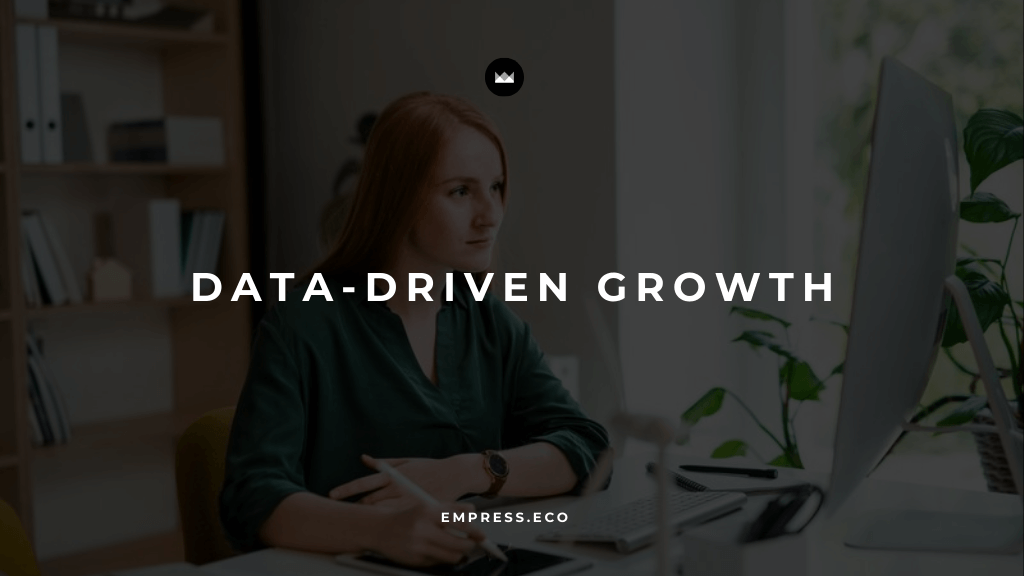
Harnessing Data-Driven Marketing to Accelerate Brand Growth in 2024
Table of Contents
In 2024, data-driven marketing isn’t just a trend—it’s a fundamental approach to growing your brand. Whether you’re a small startup or a well-established business, leveraging data can help you better understand your audience, optimize your strategies, and ultimately, drive more significant returns on investment (ROI). But how exactly do you go about it? Let’s break it down.
What is Data-Driven Marketing?
At its core, data-driven marketing is about using customer data to make informed decisions. It’s the process of collecting, analyzing, and applying data to understand your audience’s behavior and preferences. This, in turn, allows you to tailor your marketing efforts to meet their needs more effectively.
Imagine having the ability to predict what your customers want before they even know it themselves. That’s the power of data-driven marketing. By tapping into insights gathered from various sources—such as website analytics, social media interactions, and purchase histories—you can craft personalized experiences that resonate with your customers on a deeper level.
Why Data-Driven Marketing Matters
You might wonder, why all the fuss about data? The answer is simple: Consumers today expect personalization. They want brands to understand their needs, offer relevant content, and provide seamless experiences across all touchpoints. If you’re not meeting these expectations, you’re likely losing ground to competitors who are.
Data-driven marketing helps you:
- Understand Your Audience: Gain deep insights into what your customers want, what motivates them, and how they interact with your brand.
- Optimize Marketing Efforts: Focus your resources on strategies that deliver the best results, saving time and money.
- Enhance Customer Experience: Deliver personalized content and offers that speak directly to individual customer needs.
- Boost ROI: Increase the effectiveness of your campaigns, leading to higher conversions and greater returns.
Key Trends in Data-Driven Marketing
So, what’s new in data-driven marketing for 2024? Let’s explore some of the key trends that are shaping the landscape this year.
1. AI-Powered Intelligence
Artificial Intelligence (AI) is revolutionizing the way brands interact with consumers. Today, AI tools are more sophisticated than ever, enabling real-time insights, predictive analytics, and dynamic content personalization.
Example: Think about chatbots that provide instant customer support on your website. These bots use AI to understand and respond to customer queries, offering assistance 24/7 and improving the overall user experience.
Actionable Insight: Start by integrating AI tools into your marketing strategy. Whether it’s using AI to analyze customer data or to automate responses, these tools can provide valuable insights and enhance your marketing efforts.
2. Hyper-Personalization
Personalization isn’t just a nice-to-have anymore—it’s expected. In 2024, we’re seeing a shift toward hyper-personalization, where every interaction is tailored to the individual customer.
Example: Streaming services like Netflix are masters of hyper-personalization. They use advanced algorithms to recommend shows and movies based on your viewing habits, preferences, and even the time of day you’re most likely to watch.
Actionable Insight: Implement hyper-personalization by using tools that allow for dynamic content. Whether it’s personalized product recommendations on your website or targeted email campaigns, tailoring your content to individual preferences can significantly boost engagement.
3. Enhanced Customer Experience
Customers today expect a seamless experience across all touchpoints. This means your website, social media, email campaigns, and even in-store interactions need to be consistent and aligned with your brand’s messaging.
Example: Starbucks does an excellent job of this with their mobile app. Customers can order ahead, earn rewards, and receive personalized offers—all through one integrated platform. This not only enhances the customer experience but also drives loyalty.
Actionable Insight: Focus on creating an omnichannel experience for your customers. Ensure that your branding, messaging, and customer service are consistent across all platforms. Use tools like CRM systems to keep track of customer interactions and preferences.
4. First-Party Data Collection
With privacy concerns on the rise, relying on third-party data is becoming increasingly risky. Instead, brands are shifting their focus to collecting first-party data—information gathered directly from customer interactions on your own platforms.
Example: A retailer might use a loyalty program to gather data on customer preferences and shopping habits. This data can then be used to personalize offers and improve the overall shopping experience.
Actionable Insight: Start building your first-party data strategy. Offer value in exchange for data, such as exclusive content, discounts, or early access to new products. This not only helps you gather valuable insights but also strengthens customer relationships.
5. Privacy and Trust
As data collection becomes more advanced, maintaining consumer trust is more important than ever. Brands need to be transparent about how they collect, store, and use customer data. This not only builds trust but also ensures compliance with privacy regulations like GDPR and CCPA.
Example: Apple’s emphasis on privacy has become a core part of its brand identity. By prioritizing user privacy, they’ve built a strong level of trust with their customers.
Actionable Insight: Review your data privacy policies and be transparent with your customers. Clearly explain how their data is used and give them control over their information. This builds trust and can set your brand apart from competitors.
Implementing Data-Driven Marketing: A Step-by-Step Guide
Now that you’re familiar with the key trends, let’s talk about how you can implement data-driven marketing in your business. Whether you’re starting from scratch or looking to optimize your current strategy, here’s a step-by-step guide to help you get there.
Step 1: Define Your Goals
Before you can start collecting data, you need to know what you’re aiming for. What are your marketing goals? Do you want to increase website traffic, boost conversion rates, or improve customer retention? Having clear, measurable goals will keep you focused and allow you to track your progress.
Example: Suppose your goal is to increase newsletter sign-ups by 20% over the next quarter. This gives you a specific target to work toward and helps you measure the success of your efforts.
Step 2: Collect and Analyze Data
With your goals in mind, it’s time to start collecting data. This could include quantitative data like website analytics, sales figures, and social media metrics, as well as qualitative data like customer feedback and survey responses.
Example: Use tools like Google Analytics to track user behavior on your website. Combine this data with customer feedback to get a full picture of what’s working and what isn’t.
Step 3: Segment Your Audience
Audience segmentation is crucial for delivering personalized experiences. By dividing your audience into segments based on demographics, behavior, or preferences, you can create targeted campaigns that resonate with each group.
Example: An online clothing retailer might segment their audience by age, gender, and purchase history. This allows them to send targeted promotions to specific groups, such as a discount on summer dresses for women who have purchased similar items in the past.
Step 4: Create Personalized Content
Now that you’ve segmented your audience, it’s time to create content that speaks directly to each group. This could be personalized emails, targeted ads, or even tailored website experiences.
Example: If you’ve segmented your audience by purchase behavior, you might send a personalized email to customers who have previously bought workout gear, offering them a discount on a new line of fitness apparel.
Step 5: Optimize and Iterate
Finally, data-driven marketing is an ongoing process. It’s important to continually monitor your results, make adjustments, and optimize your strategies based on what you learn.
Example: If you notice that a particular email campaign isn’t performing as well as expected, analyze the data to see where you can make improvements. Maybe the subject line isn’t resonating, or the call to action needs to be clearer.
Challenges and Considerations
Of course, data-driven marketing isn’t without its challenges. You’ll need to ensure that your data is accurate and up-to-date, which may require regular data cleansing. Additionally, integrating data from multiple sources can be complex, but it’s essential for gaining a comprehensive view of your customers.
Privacy is another major consideration. As you collect more data, it’s crucial to maintain strict privacy standards and comply with regulations to protect your customers’ information.
Conclusion
Data-driven marketing in 2024 is all about using insights smartly, not just collecting more data. By embracing AI-powered tools, hyper-personalization, and a focus on customer experience, you can unlock the full potential of your marketing efforts. Remember to navigate the privacy landscape carefully, and always aim to build trust with your audience.
Ready to take your marketing to the next level? Start by defining your goals, collecting the right data, and creating personalized experiences that resonate with your customers. The future of your brand’s growth depends on it.
Call to Action: Start harnessing the power of data-driven marketing today. Whether you’re looking to optimize your current strategies or start from scratch, we’re here to help. Let’s work together to drive your brand’s growth in 2024 and beyond. Contact us to get started.
Empress Newsletter
Join the newsletter to receive the latest updates in your inbox.



